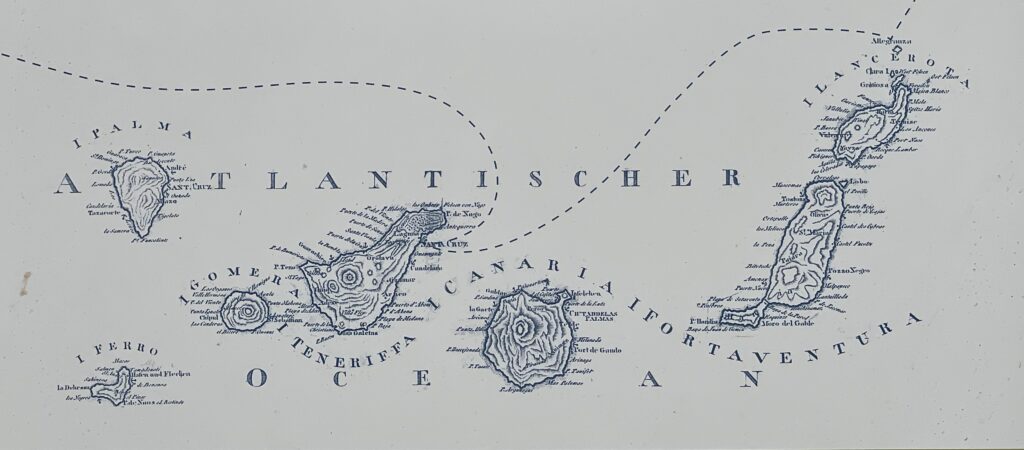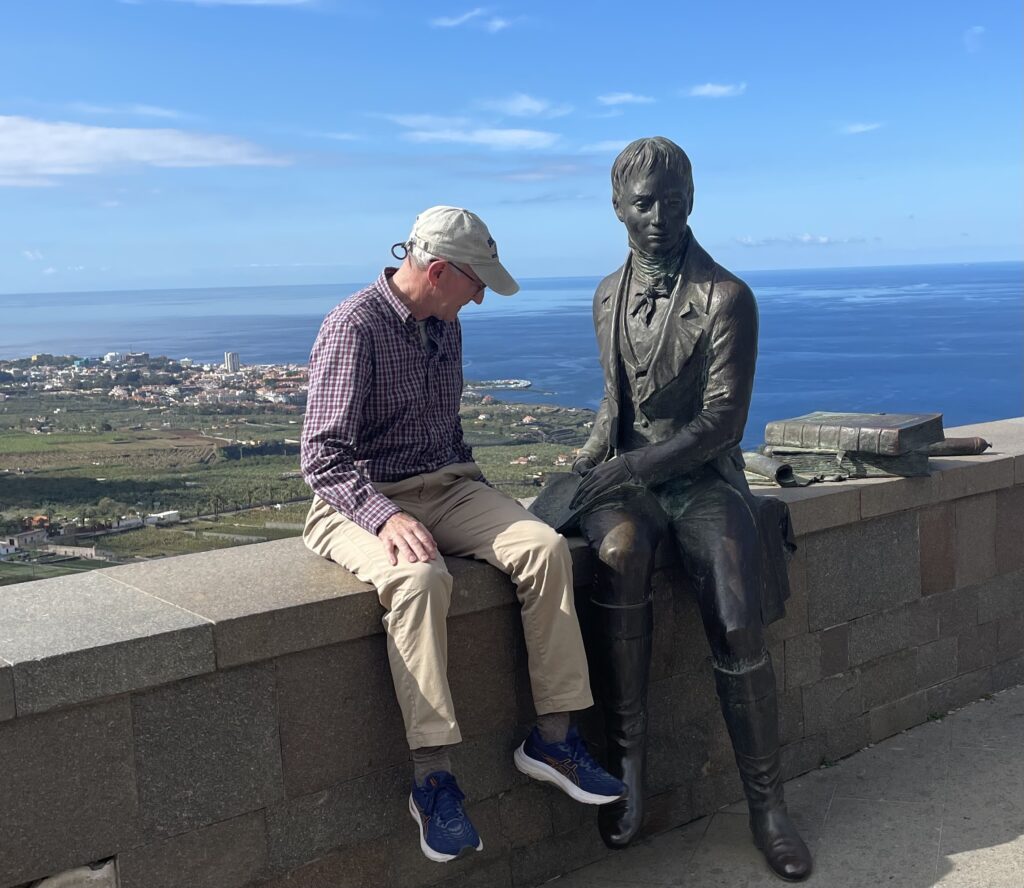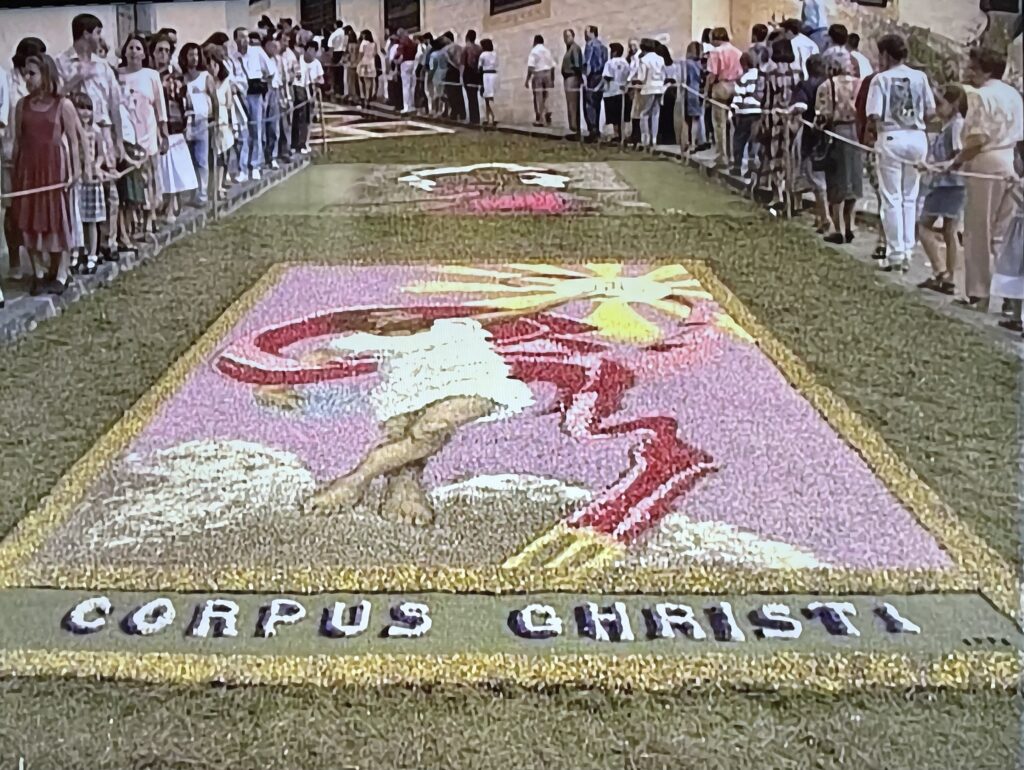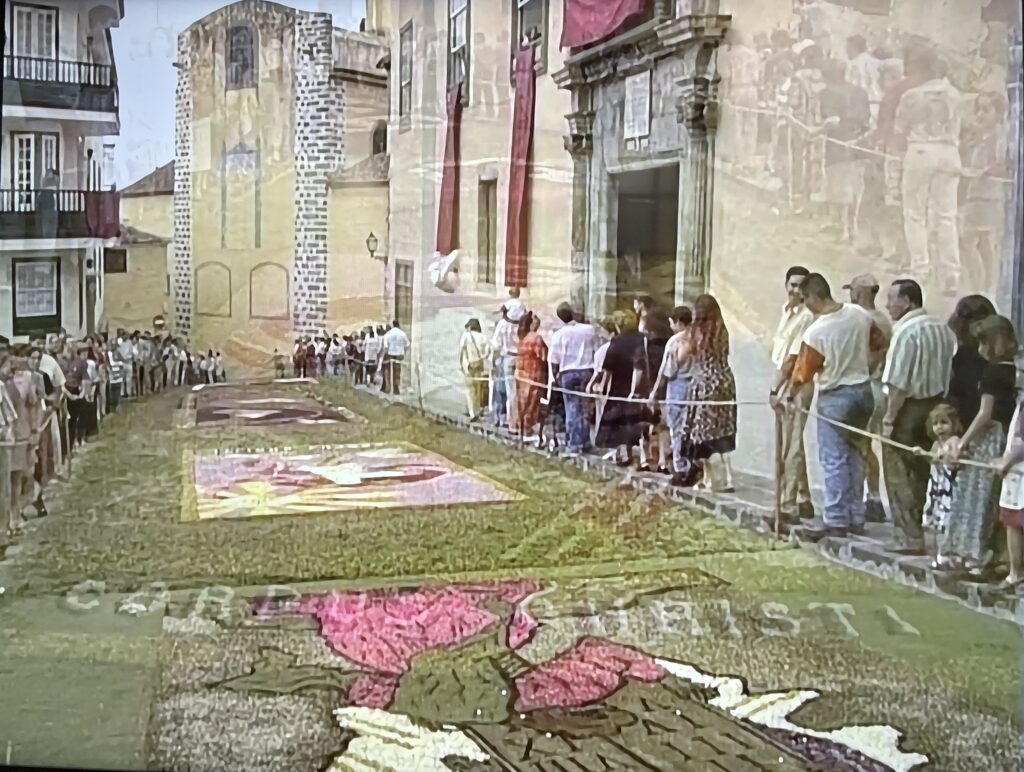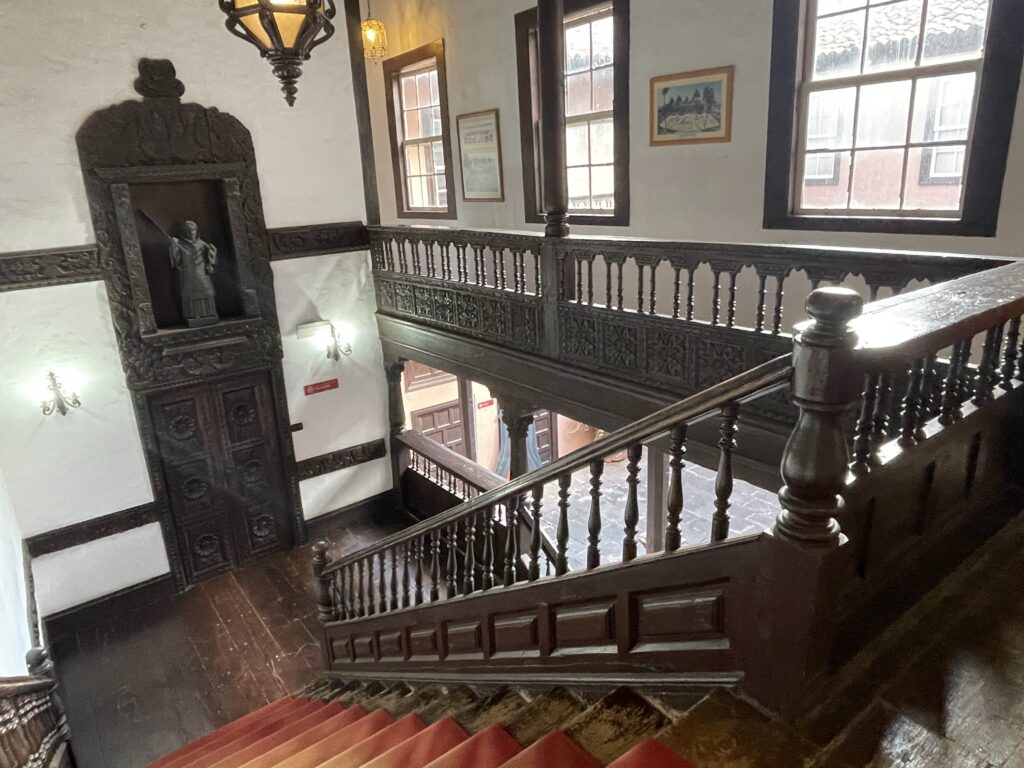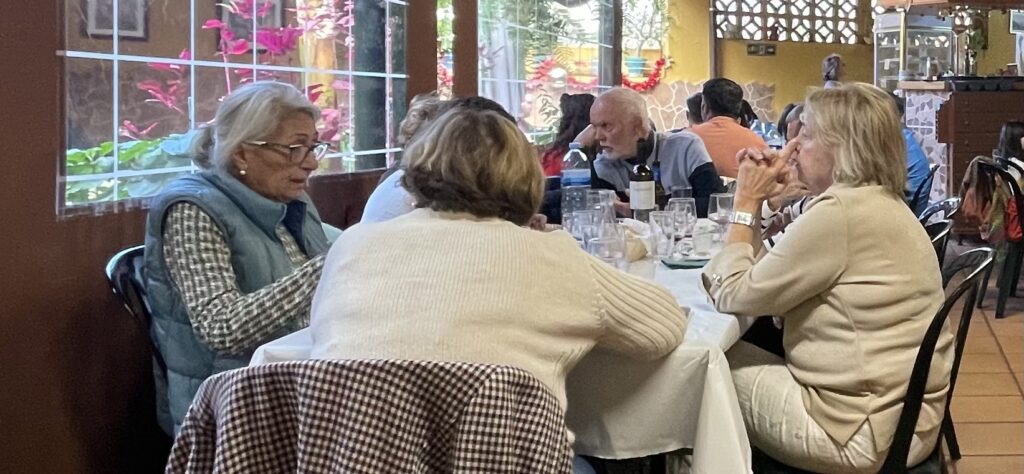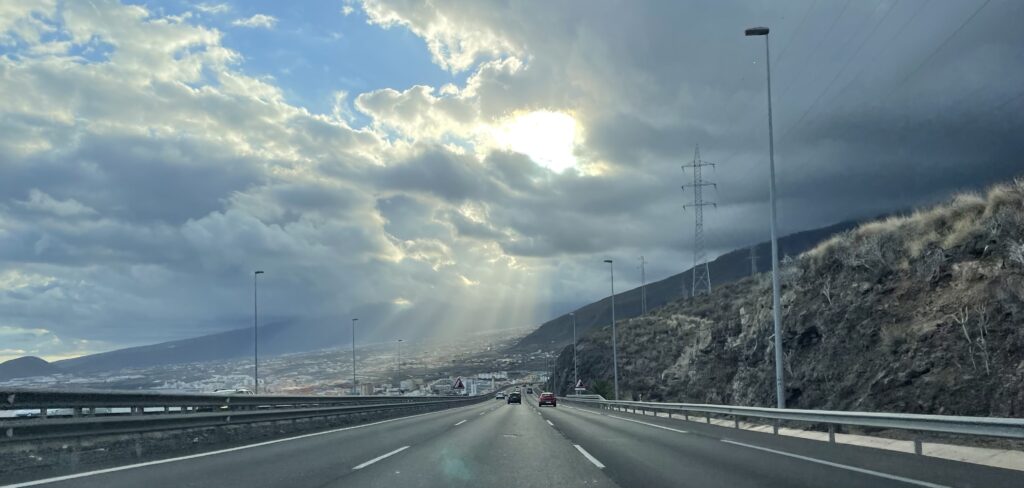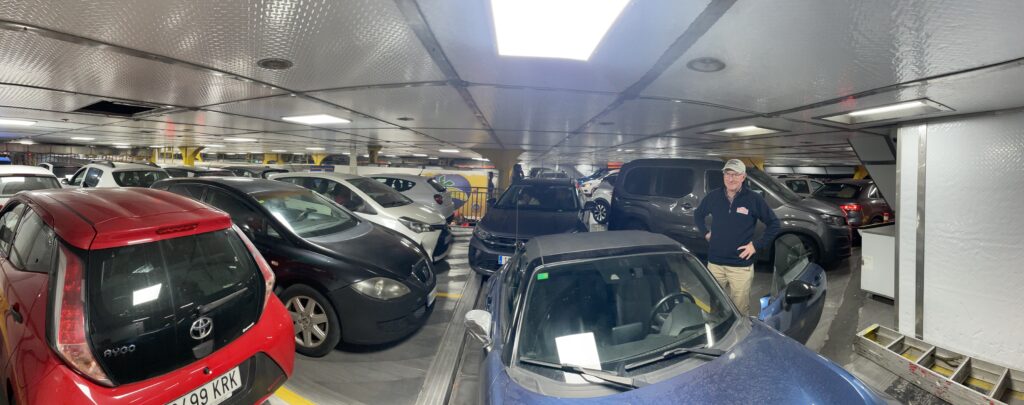In which Sid and Doris suddenly and unexpectedly discover sand and flower carpets in La Oratavo.
Today starts with driving down to Agaete, mostly behind a stinky diesel. Sid hangs back but the oil lingers in the air. The guide books make a fuss about the lushness. They say there are trees, but mostly they mean there is non lava based countryside. Trees show signs of previous forest fires, which is good because Canarian pines are renowned for their ability to recover from a good scorching.
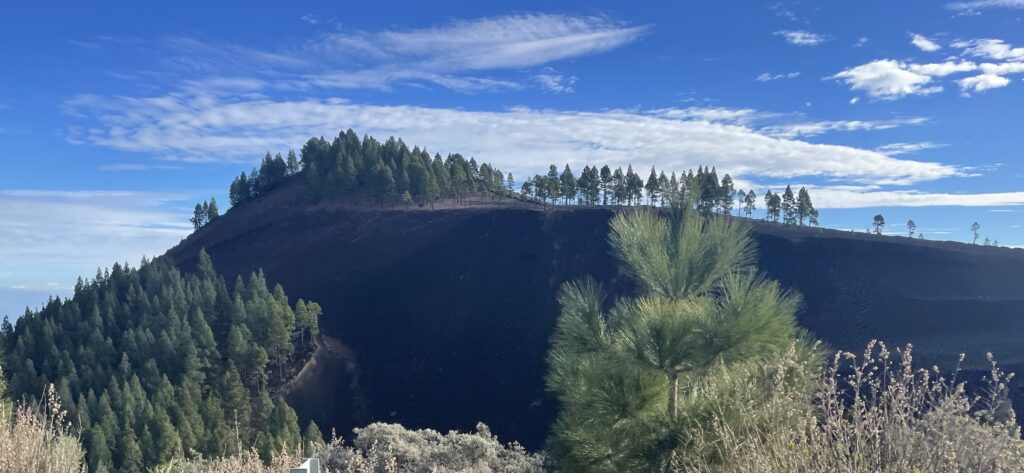
Guide books keep the covers apart with sentences that rely on very extended noun phrases. The idyllically situated whitewashed chapel of St George nestling etc, etc. No amount of persiflage can disguise the fact that Buenavista (which has the view pictured below) is a place where people do live, but cannot remember why.

We take the ferry from Agaete on Gran Canaria to Tenerife. On our way to Los Christianos (the departure port for la Palma) we stop in to visit the Humboldt viewpoint. It is named for the German naturalist who visited in 1799 on his way to South America (1799 to 1804) where he ‘founded modern geography’, writing 21 papers describing the physical geography in objective terms, by which the Wiki author means non-Spanish. The map below charts Humboldt’s visit and reminds Sid which island is which, as it sometimes gets a bit hazy.
Here below. Sid and Alex von H share a moment with some Linnaean taxonomy before Sid goes on to La Oratavo and Alex goes on to become the honorary Chancellor of Prussia, which stipend allows him to spend everything else on research and polymathing (majoring on terrestrial magnetism) in Paris and Berlin (by then in the German Confederation) until 1859.
Since the Spanish landlords came La Oratavo has grown vines, tomatoes and banananas. Of more interest, in the town museum is a celebration of ephemeral sand and flower carpets. As with the santon villages the rule is that the effort you put in each year is the real point. At Corpus Christi in May, squares and streets are covered in designs set out in volcanic sand or flower petals glued to the floor.
Local meadows and gardens are stripped of petals. Hillsides are scoured for the required coloured rocks. Designs are set on squared paper and specialised quantity surveyors decide how many old ladies’ gardens must be denuded of flowers, and no quarter given. We believe that a modern system of Indulgences will forgive you many sins if you join the crowd shuffling dutifully past every one of the carpets. (Pics are from a rather scratchy old video playing in the museum and it is possible that you can play “spot the haircut” to try and date it.)
The building itself is just one of many many wooden buildings in Orotava, all of which, with the mysterious exclusion of the sand and flower carpet museum, have been dutifully listed in the guidebook to extend Orotava’s entry to four pages.
This is on a par with the Great Hungarian Button Museum, certainly vaut le detour.
Lunch starts well in a locals’ cantina, ordering an escalope and an omelette. A lack of a common language means that the staff do not own up to the kitchen backlog and deliver the ten minute dishes fifty minutes later. This makes the decision to drive the quicker roads around the edge of the island to the next ferry all the easier. Also, there are big black clouds – see pics – some of the high level drive might have been above the cloud but a lot of it would have been in it.
Almost last off the ferry, which is slightly frustrating with a drive ahead of us..
Doris beats herself up (unnecessarily) for booking somewhere in the an end of b down a wiggly road in the dark. It may even be beyond ‘beyond’. But S and D turn it into a charming run as Doris calls all the bends from Google Maps and the crew carve down to The Estancia by Princess Resorts in hungry good spirits.
